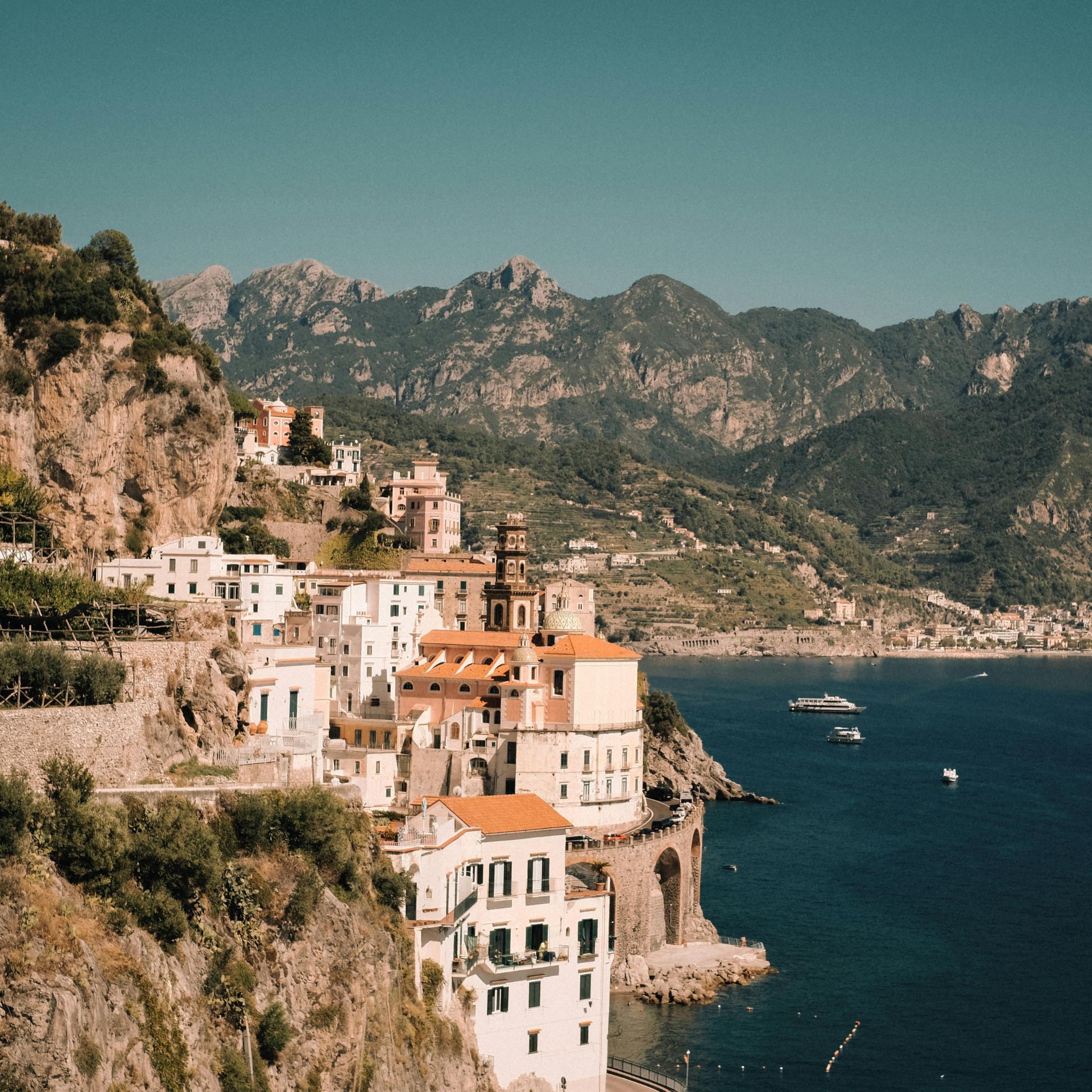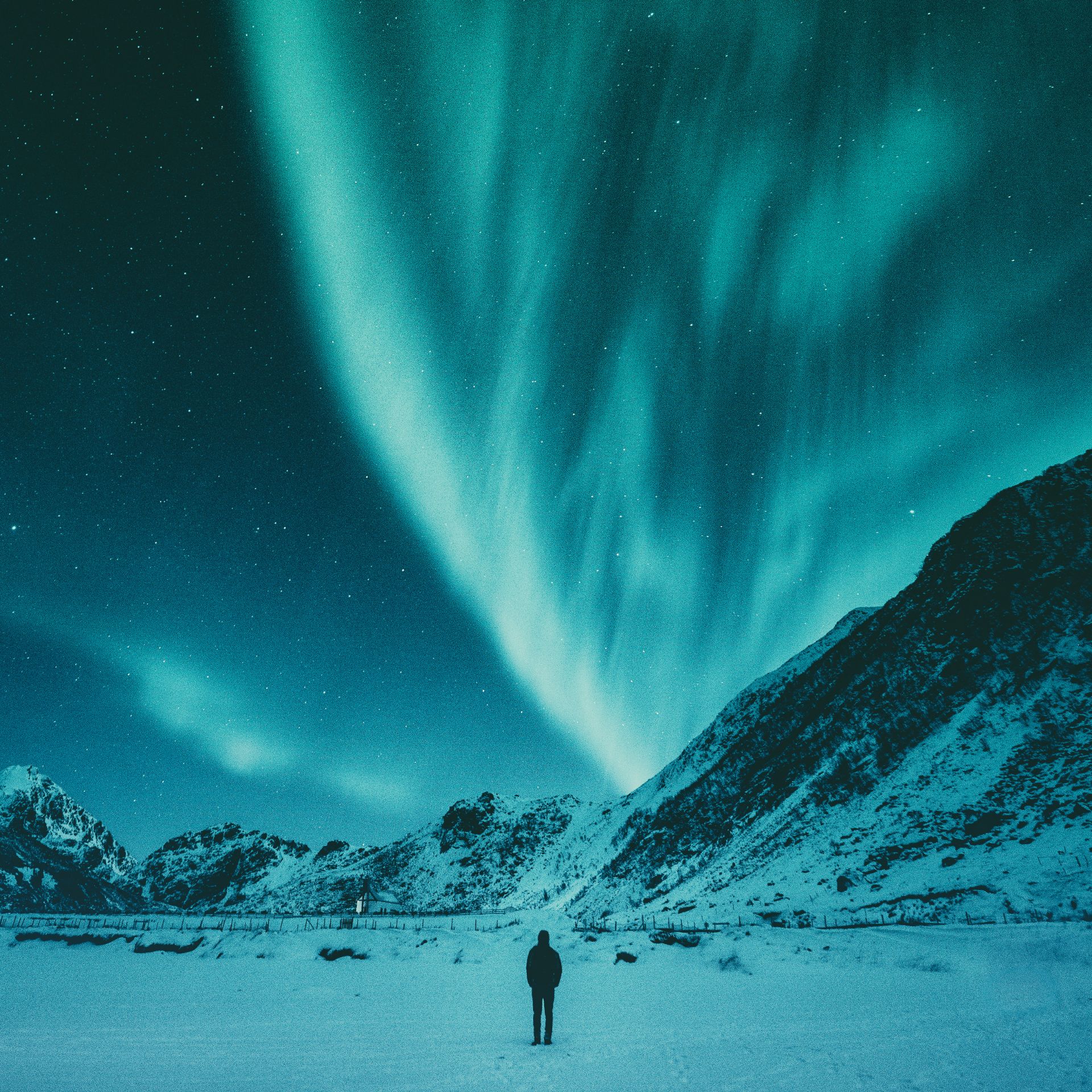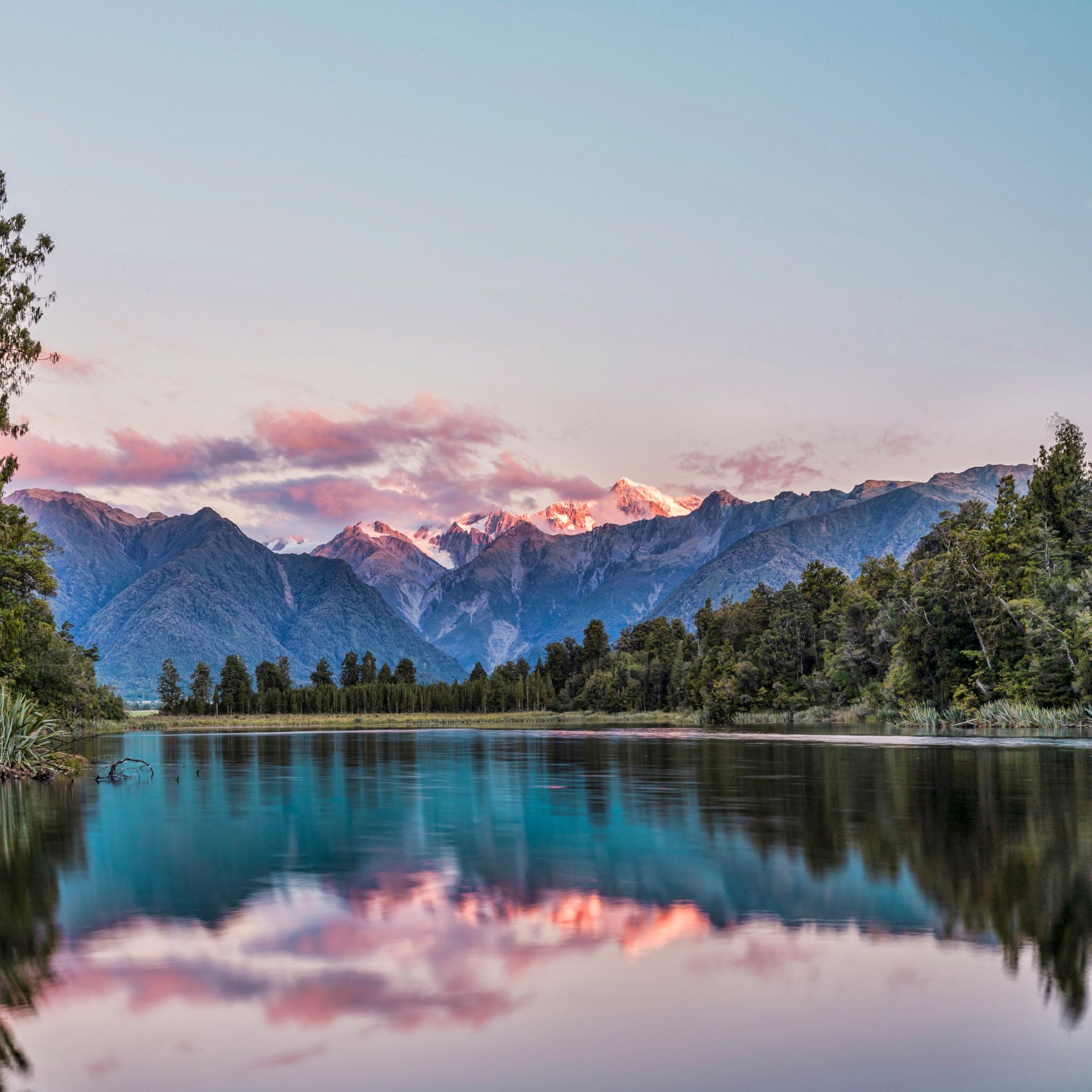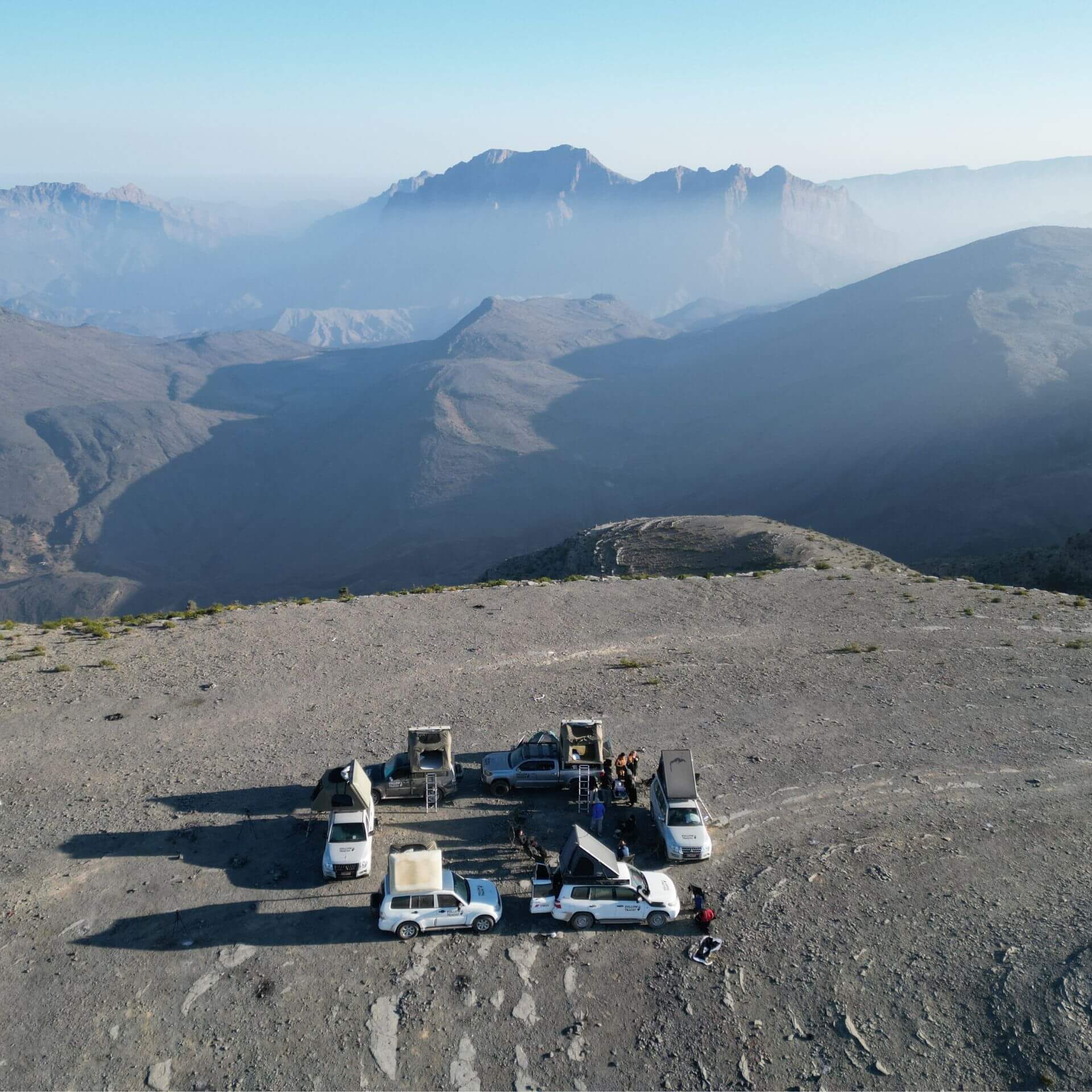Plan the ultimate Alps road trip with detailed 4 to 14-day itineraries, scenic passes, rental tips, and essential costs.
When it comes to planning a road trip across the Alps, I was kind of disappointed with the information I found online. Most articles (from bloggers and also established magazines) focused more on personal itineraries and suggestions, rather than the preparation of the trip itself and the best way to cover such a massive region.
Crossing eight different countries, the Alps are the highest and most extensive mountain range system in Europe. Therefore, to travel this region at its fullest, you will probably need a month or two. Additionally, while the Alps are big part within the borders of European Union (with the exception of Liechtenstein and Switzerland), language, regulations and even prices change drastically from one country to the next.
In order to plan the perfect road trip for YOU, understand first which options you have, research which area of the Alps you want to visit and how rules will change from country to country.
Read more: The ultimative guide for getting an e-SIM in Europe
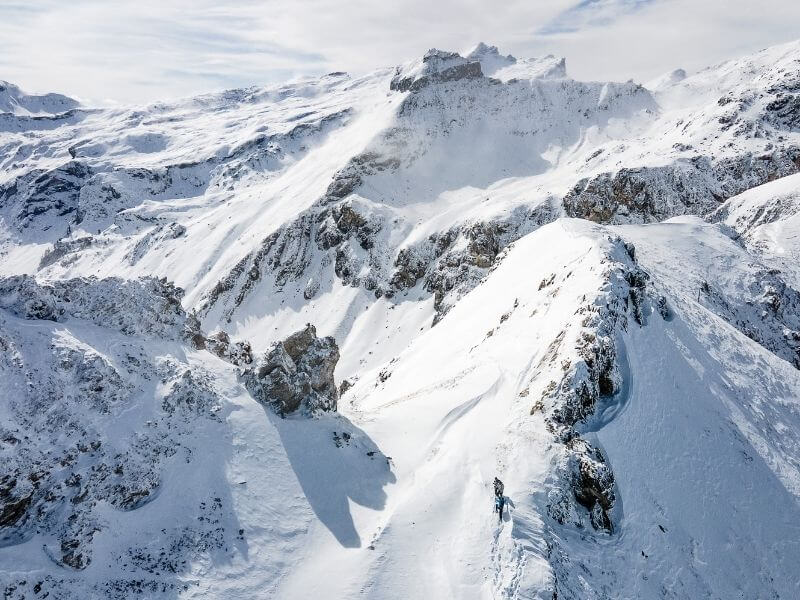
How to Plan a Road Trip in the Alps
Before you even book flights, think about which part of the Alps you want to travel around, how many places you want to explore and which city suits you the most to start and end the road trip.
Due to its inexpensive flight connections, Salzburg, Munich, Zurich, Basel and even Venice are great spots to start the road trip. All of these airports are located outside the city, which makes them perfect for simply landing, picking up the car and get on the road.
Even though Zurich tends to be the most popular place to start a road trip in the Alps, this is the most expensive city of Europe. It’s true you will start your trip in the heart of the Alps, but end up spending in a single day, what you would usually spend on three.
If you want to compare prices with all companies together, check the different options at DiscoverCars and book your vehicle.
My tip: The cheapest rentals are in Italy.
INSIDE TIP: By starting and ending at the same location, you reduce significantly the cost of your rental car. It also makes the logistics of the itinerary easier, as you will end up booking a round trip flight.
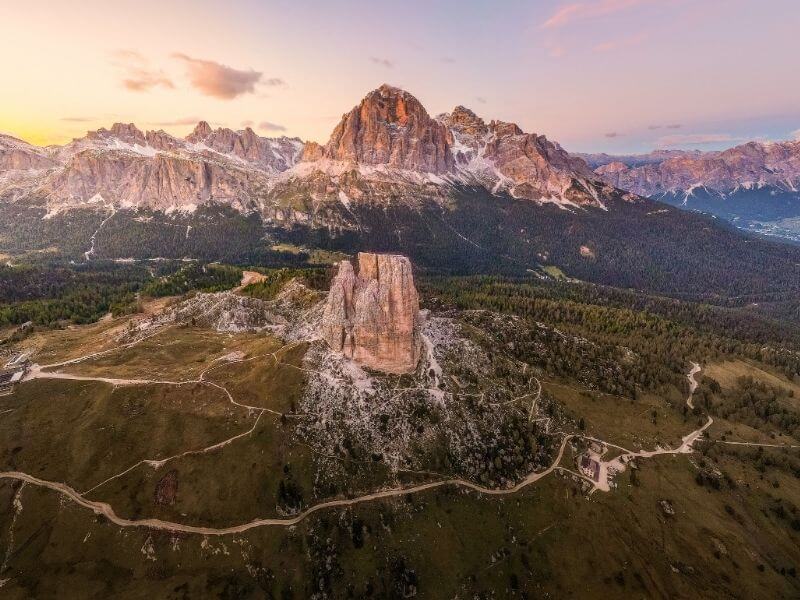
Traveling should not be a race. Although it’s nice to visit different places and explore new countries on a single trip, take into consideration that you don’t want to drive for hours from one place to another and have no time for a hike or a nice sunset.
Driving times across the Alps are also very unreliable. Roads are narrow, wet or icy, and if you are not used to this kind of drive, a two hour journey can easily turn into three or four. While I was exploring the Alps, I was average driving 60 – 150 km from one place to another – a distance that sometimes took me almost a full day to cover.
These are some suggestions for a round trip road trip across the alps:
Be connected at all times in Europe without activating any roaming.
I recommend an e-SIM with Airalo. With them, I bought a plan of 10 GB for my whole stay in most countries.
Top Scenic Routes in the Alps
Route: 4 Days in the Swiss Alps
(Zurich – Lucerne Lake – Lauterbrunnen – Bern area – Zurich)
This four-day journey through the Swiss Alps is like stepping into a postcard. Starting in Zurich, you’re greeted with the city’s vibrant atmosphere, but it’s when you hit Lucerne Lake that the magic begins. The pristine waters of the lake reflect the towering peaks in the most breathtaking way. As you head into Lauterbrunnen, the valley of 72 waterfalls, you can feel nature’s raw power all around you.
Everywhere you look, towering cliffs and cascading waterfalls make you feel tiny in the best way possible. The Bern area adds a touch of historical charm, and by the time you return to Zurich, you’re left with memories of untouched alpine beauty and serene Swiss landscapes.
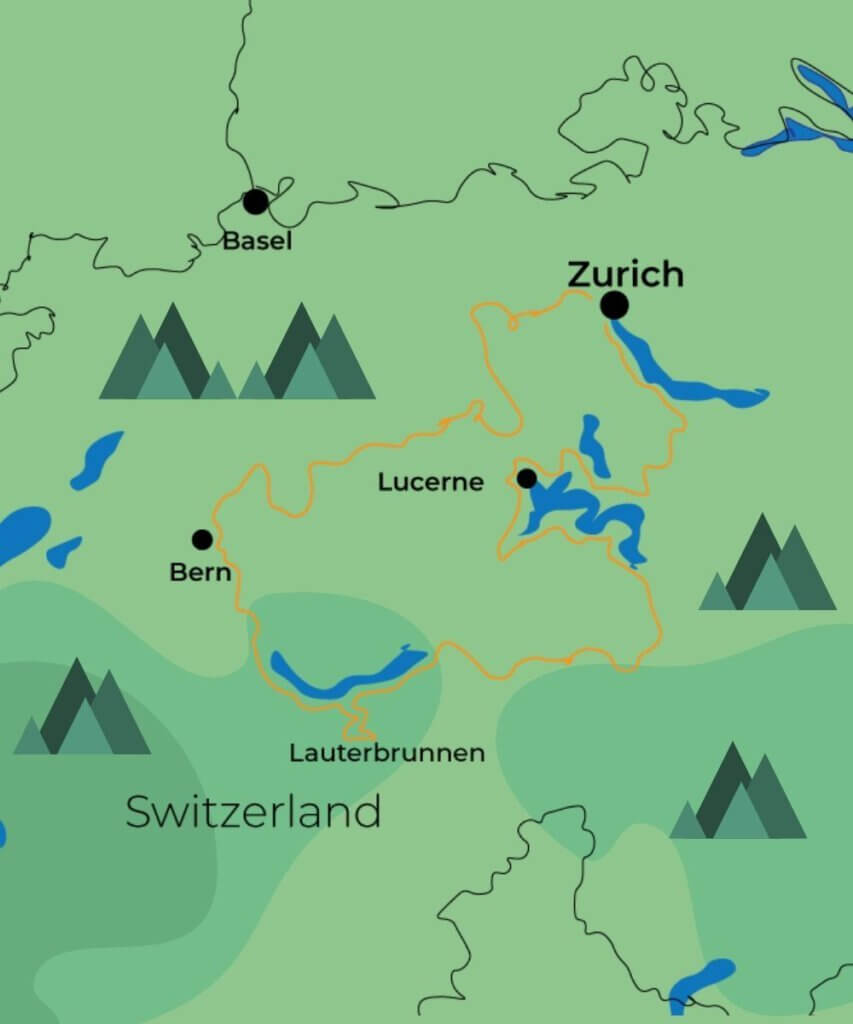
Route: 7 Days in German-Speaking Countries
(Munich – Garmisch/Neuschwanstein – Liechtenstein – Parc Nazuinal Svizzer – South Tirol – Hallstatt – Munich)
This 7-day road trip takes you through the four German-speaking countries in Europe, and every stop feels like a new fairytale chapter. Starting in Munich, the journey kicks off with Bavarian charm, leading you to Garmisch and Neuschwanstein, where the iconic fairytale castle truly lives up to its fame. The tiny principality of Liechtenstein is a hidden gem nestled between peaks, offering a peaceful stop before entering the raw, untouched beauty of Switzerland’s Parc Nazuinal Svizzer.
The alpine vibes are on full display here, but the route continues to captivate in South Tirol with its dramatic landscapes and Italian flair. Hallstatt wraps things up like a final magical flourish – a lakeside town that looks like it’s been plucked straight from a dream.
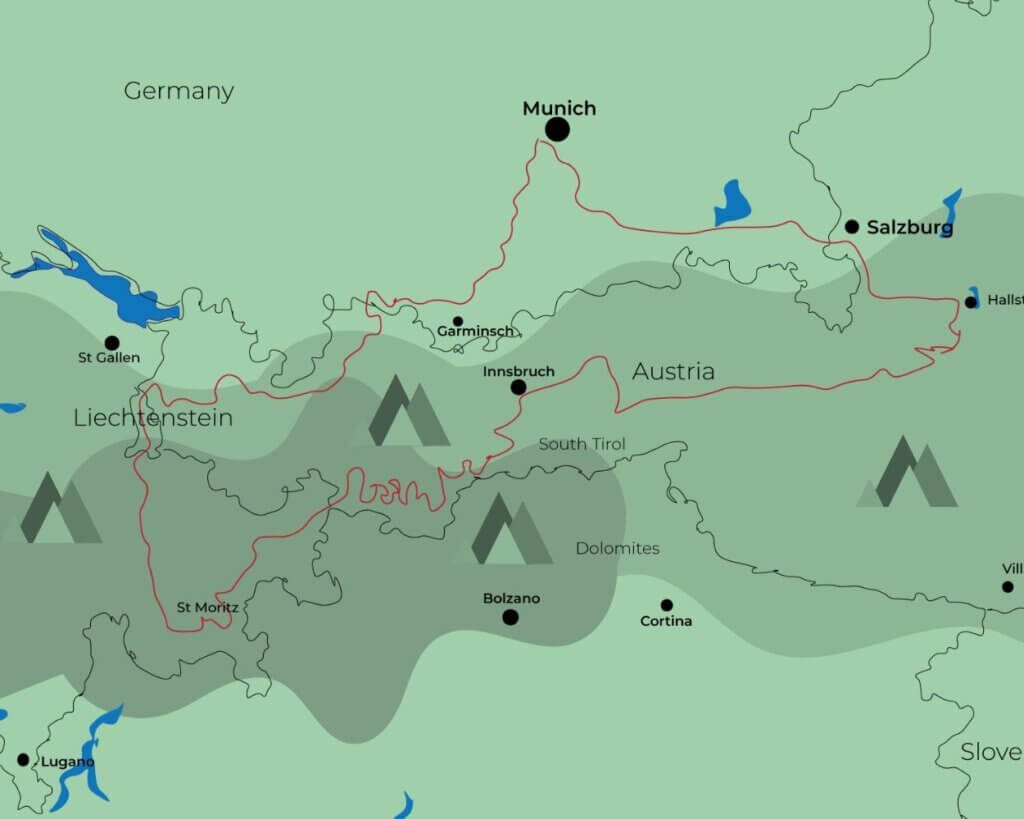
Route: 10 days in the Eastern Alps
(Lyon – Chamonix – Zermatt – Lauterbrunnen – Liechtenstein – Lucerne – Bern – Lausanne – Lyon)
This 10-day journey through the Eastern Alps is the ultimate adventure for nature lovers and adrenaline seekers alike. Starting in Lyon, the vibrant energy of France quickly transitions into the raw beauty of Chamonix, where Mont Blanc stands as a beacon for mountaineers. Zermatt and Lauterbrunnen offer awe-inspiring landscapes that make you feel like you’ve stepped into a different world – towering peaks, glaciers, and waterfalls are your constant companions. Liechtenstein provides a charming alpine respite before the journey sweeps you into Switzerland’s serene Lucerne and Bern. Lausanne rounds out the trip with its lakeside charm and a touch of French influence, making it a well-rounded exploration of both nature and culture.
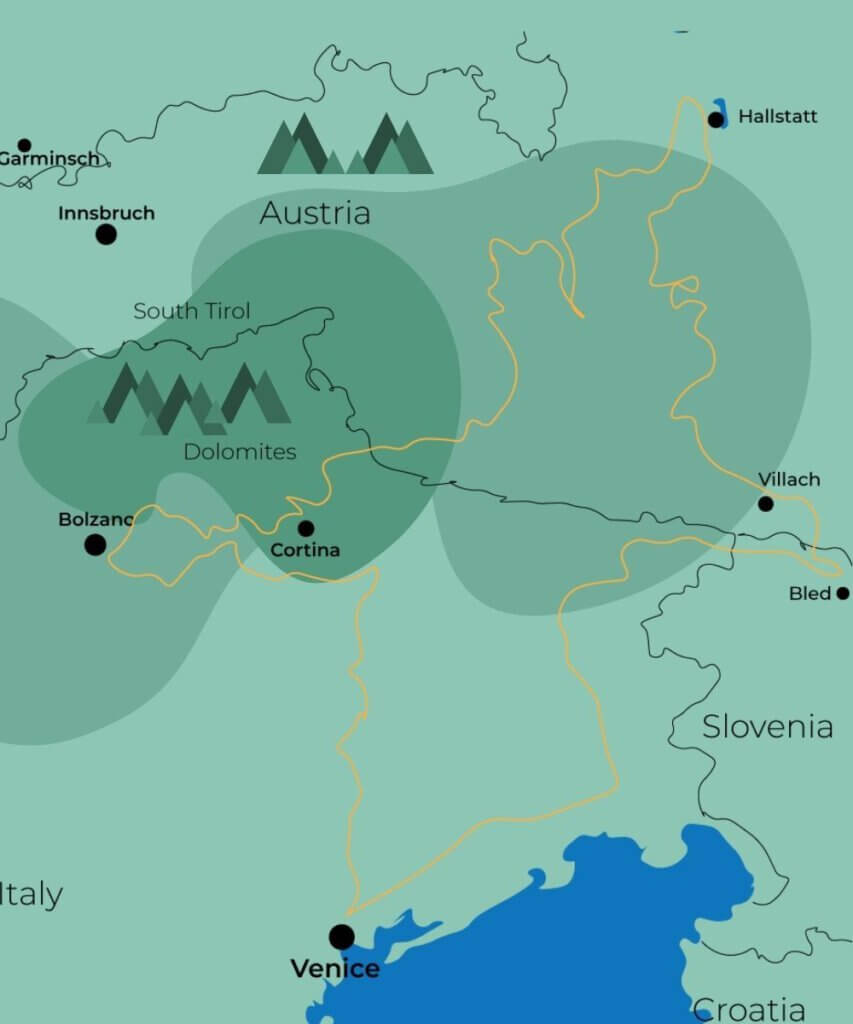
Route: 10 days in the Western Alps
(Venice – Kranjska Gora/Bled Lake – Nockberge – Hallstatt – South Tirol – Cortina – Venice)
This 10-day trip through the Western Alps is a magical blend of mountains and mystique. Starting in Venice, the romance of the city gives way to the enchanting beauty of Kranjska Gora and the emerald waters of Bled Lake. As you make your way through the Nockberge biosphere, the landscapes become wilder, revealing the Alps’ rugged heart. Hallstatt feels like something out of a dream with its lakeside setting, while South Tirol’s towering Dolomites offer a stark contrast, embodying the alpine wilderness in all its glory. Cortina brings the trip full circle with Italian alpine charm before the journey winds back to the watery wonderland of Venice, making for a perfect ending.
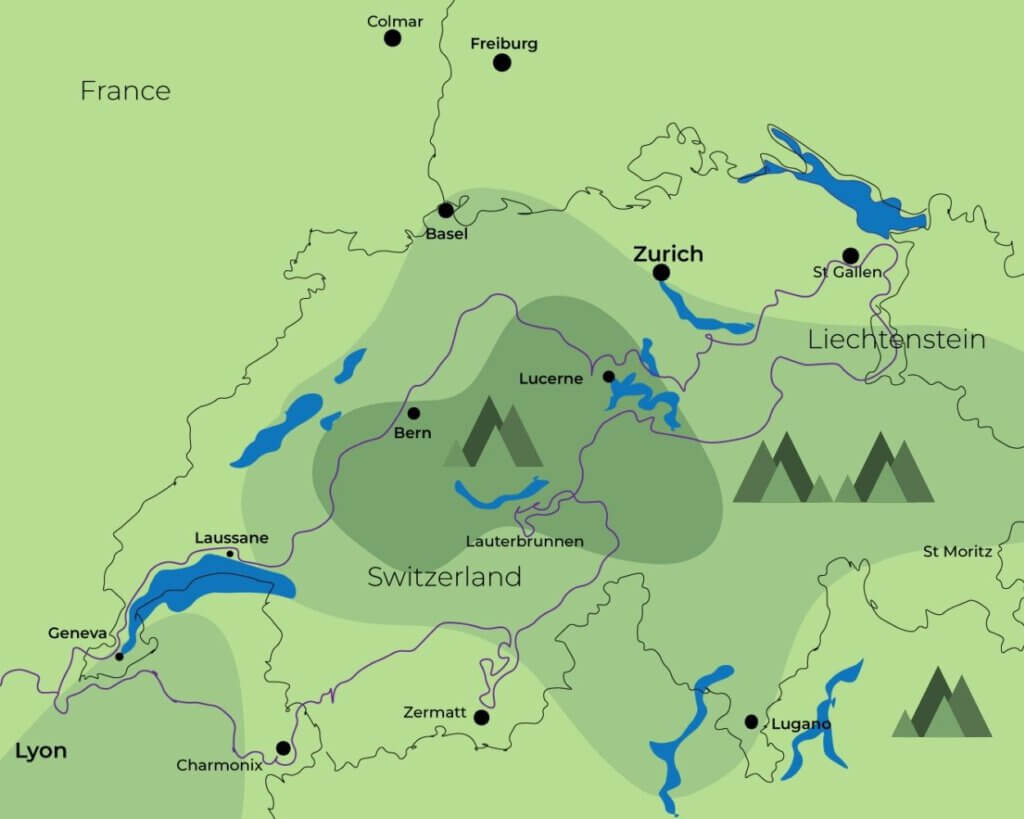
Route: 14 days for the best of the Alps
(Munich – Garmisch/Neuschwanstein – Liechtenstein – Lucerne – Zermatt – Lauterbrunnen – Parc Nazuinal Svizzer – Cortina – Hallstatt)
This 14-day adventure is the ultimate alpine escape, offering a little bit of everything – from bustling cities to tranquil mountain retreats. You start in Munich, with its Bavarian charm, then journey through the picturesque towns of Garmisch and Neuschwanstein, where fairytale landscapes unfold at every turn. Liechtenstein offers a moment of serenity before the stunning beauty of Lucerne takes over.
Zermatt’s Matterhorn and Lauterbrunnen’s waterfalls feel like the crown jewels of the Alps, but the journey doesn’t stop there. Parc Nazuinal Svizzer provides a sense of untouched wilderness, while Cortina and Hallstatt offer lakeside magic and mountain grandeur. This route encapsulates the best of alpine life and leaves you breathless at every stop.
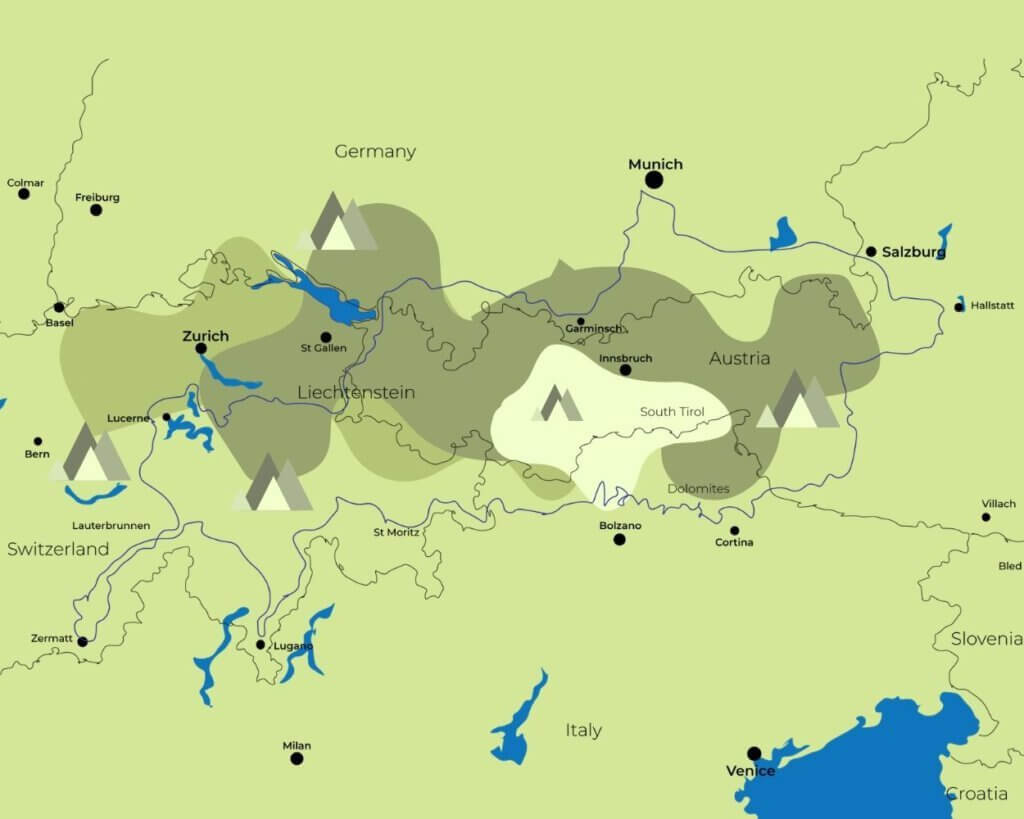
Top Recommendation: Drop off and pick up your car in the same location. Also, try to book your car on bigger cities with large airports. This is way cheaper and can help you save costs.
| Itinerary | Duration | Countries Covered | Distance (Approx.) | Highlights | Difficulty | Avg. Price Range (EUR) |
|---|---|---|---|---|---|---|
| 4 Days in the Swiss Alps | 4 days | Switzerland | ~450 km | Zurich, Lucerne Lake, Lauterbrunnen, Bern | Easy | €450–€700 |
| 7 Days in German-Speaking Alps | 7 days | Germany, Austria, Liechtenstein, Switzerland | ~800 km | Munich, Neuschwanstein, South Tirol, Hallstatt | Moderate | €900–€1300 |
| 10 Days in the Eastern Alps | 10 days | France, Switzerland, Liechtenstein | ~1,200 km | Lyon, Chamonix, Zermatt, Lauterbrunnen, Bern | Moderate | €1,300–€1,800 |
| 10 Days in the Western Alps | 10 days | Italy, Slovenia, Austria | ~1,100 km | Venice, Bled, Nockberge, Hallstatt, Cortina | Moderate | €1,200–€1,700 |
| 14 Days Grand Alpine Circuit | 14 days | Germany, Austria, Switzerland, Italy | ~1,600 km | Zermatt, Grossglockner, Lucerne, Lauterbrunnen | Challenging | €1,800–€2,500 |
Car Rental Tips
Driving across the Alps is not like driving between Germany and the Netherlands. There are several rules you have to comply and things you have to inform your car rental company in advance.
- Can you drive your rental car across the border – is there an additional cost for
each country? - How are the regulations for driving to non-EU countries like Liechtenstein or
Switzerland? - Do you need winter tires for this journey? –
all rental companies charge extra for this service - Does your vehicle already has the toll sticker (vignette) for Austria and/or
Switzerland?
Road Trip Costs in the Alps (in EUR)
| Expense Category | Cost Range | Details & Notes |
|---|---|---|
| Car Rental | €50 – €120 per day | Prices depend on vehicle type (compact vs. 4WD). Prices higher for SUVs, which may be useful for mountain routes. |
| Fuel | €1.80 – €2.10 per liter | Fuel costs in the Alps region can be relatively high due to mountainous driving. Expect to cover about 500-700 km in a week-long trip. Total fuel cost: €100-150. |
| Toll Roads & Vignettes | €10 – €50 (per country) | Many Alpine countries require vignettes (Austria, Switzerland, Slovenia). Tolls for mountain passes may cost extra. |
| Accommodation | €60 – €150 per night | Accommodation ranges from basic alpine guesthouses to mid-range hotels. Prices increase in popular resort towns or during peak seasons (summer/winter). |
| Food | €15 – €40 per day | Eating at local restaurants may cost around €15-25 for lunch or dinner. Budget-conscious travelers can spend less by buying groceries and cooking meals. |
| Parking Fees | €5 – €20 per day | Parking fees vary depending on the location. Some towns charge high fees, while smaller villages may have free parking options. |
| Cable Cars & Scenic Trains | €20 – €60 per ride | Many popular scenic spots are accessible by cable cars or scenic trains. Cost varies depending on the specific route and altitude. |
| Winter Gear Rental | €30 – €50 per day | If traveling in winter and skiing, snowboarding gear or chains for cars may need to be rented in addition to clothing. |
| National Park Fees & Attractions | €5 – €20 per person | While most hikes and natural parks are free to access, some may have entrance fees. Guided tours, adventure sports, or specific attractions may add to the cost. |
| Miscellaneous (souvenirs, small activities) | €50 – €100 (total) | For souvenirs, small museum entrances, or spontaneous activities along the road. |
Key Tips for the planning of your Road Trip in the Alps:
- Car Type: Opt for a vehicle suitable for mountain driving. A compact car may suffice in summer, but a 4WD or SUV is recommended in winter or for mountainous terrain.
- Vignettes & Tolls: Countries like Austria, Switzerland, and Slovenia require vignettes for highway use. Be sure to purchase them at border crossings or service stations to avoid fines. Mountain passes, like Switzerland’s Grand Saint Bernard, may charge tolls.
- Seasonal Differences: Prices for accommodation and activities tend to rise during peak winter sports season (December to March) and summer hiking season (July-August).
- Packing Essentials: In addition to travel gear, consider bringing a GPS or offline maps, as Alpine regions may have limited mobile coverage in some areas.
Scenic passes and roads in the Alps
Driving across the Alps is definitely one of the best road trip experiences in Europe: serpentine mountain roads surrounded by snowy peaks, viewpoints that will take your breath away and incline roads that might give you the chills for a second.
But don’t worry, crossing the Alps can be as adventurous and complicated as you want it to be. Europe’s highway system is probably the best in the world and with modern long tunnels between mountains and 6 lane highways connecting large cities, you can easily cross the Alps from Germany to Italy in less than 2 hours.
Yet, the beauty of a road trip in the Alps does not rely on crossing it fast, but in enjoying the journey. Country and alpine roads are very common for travelers looking forward to a drive closer to nature and well known alpine passes became perfect spots for having a break, go for a hike and enjoying the magnificent views.
Driving from alpine pass to alpine pass is not a bad choice if you want to get a glimpse of the natural landscapes of the Alps and do short hiking routes before continuing driving.
Some of the most beautiful alpine passes in the Alps are:
- Great St Bernard Pass – Switzerland to Italy
- Giau Pass and Falzarego Pass – Italian Dolomites
- Col de la Bonette – France
- Nockalm Road – Austria
- Grossglockner High Alpine Road – Austria (It has an extra toll fee of 35 EUR)
Read more: Types of signs at the hiking routes in the Alps
Read more: Planning a winter road trip in Swedish Lapland

Do you need to pay Tolls or a Vignette in the Alps?
In order to drive through the highways of Austria, Slovenia or Switzerland, you have to purchase a toll sticker (vignette).
These stickers are available at any tank station close to the border and should be properly displayed at the front glass before you enter to these territories.
Prices for the vignette in the past year are:
Car Vignette in Austria
- 9,50 EUR for 10 days
- 27,80 EUR for 2 months
- 92,50 EUR for 12 months
Car Vignette in Slovenia
- 15 EUR for 7 days
- 30 EUR for 1 month
- 110 EUR for 12 months
Car Vignette in Switzerland
- 38 EUR (40 CHF) for 12 months – this is the only option
On the other side, Italy and France use the traditional toll charge, where tolls are paid at toll gates, where they can be paid by cash, credit card or a fuel card.
Germany and Liechtenstein has no toll fees for using their highways or roads
NOTE: Crossing large tunnels in Austria or Slovenia have additional costs. Usually from 5 EUR up to 12 EUR.
Best Places to Stay During Your Road Trip in the Alps
In such a magical location surrounded by mountains, staying in a small hotel room in a large city should be your last option. Cities tend to be more expensive and distant from nature, and while they can offer a better nightlife and restaurant options for you to enjoy, the enchantment of the Alps lies on disconnecting from everything and simply get closer to nature.
Being in the wilderness does not necessarily mean wild camping. Wild camping is forbidden almost everywhere in Europe and with fines that can go up to 10.000 EUR – a risk that is simply not worth it. But don’t worry, there are still amazing alternatives no matter what your budget is.
While in this part of Europe, I was able to find the best prices available for any hotel at Booking.com and Agoda. These are the two largest platforms to compare hotel prices.
Staying in a Camping Area
Camping areas in the Alps are very popular. They have excellent facilities (clean bathrooms, showers, kitchens) and are usually located next to a point of interest. They are also the most inexpensive choice when it comes to accommodation and since you are traveling with a car, you can easily carry a tent and a sleeping bag with you.
While Austria has some of the cheapest camping areas in Europe, Switzerland camping spots are at least 3-4 times more expensive than in its neighboring countries.
For example, I camped with a friend in Austria for 12 EUR a night in low season, but two days later in Switzerland I paid 50 EUR.
Booking a Homestays & Pensions along the Alps
Known as a “Gasthof” in German speaking countries, this is the kind of accommodation that will make you feel at home. Way cheaper than a hotel, cozy, regional and serving probably the best food in the area, these lodges are easy to find along the way or in small villages across the Alps.
They are mostly family run and have a history that goes generations back. They are in my opinion the best place for a warm dinner, a cold beer and a night of stories to share.
Stay in a Mountain Hut
Very similar to a pension, mountain huts are very cozy places located in scenic spots. These mostly family run businesses are the best option if you are planning full days of hiking or skiing. However, due to their unique location and limited capacity, they get fully booked months in advance and tend to be more expensive.
On the other hand, mountain huts offer that cozy and warm alpine experience you expect from the alps – a warm cabin with just 10 people and nothing but wilderness around you.
Splurge yourself in an Alpine resort
If you want to treat yourself with something fancier, alpine resorts are your choice to go. Extravagant, luxurious and located in the heart of the action, these are the right place to relax and enjoy after a long day outdoors.
Alpines resorts tend to be expensive though. With prices higher than in 5-star hotels in big cities, these are mostly an option for that occasional splurge once or twice a year.
Read more: Driving along the most epic alpine route in Austria
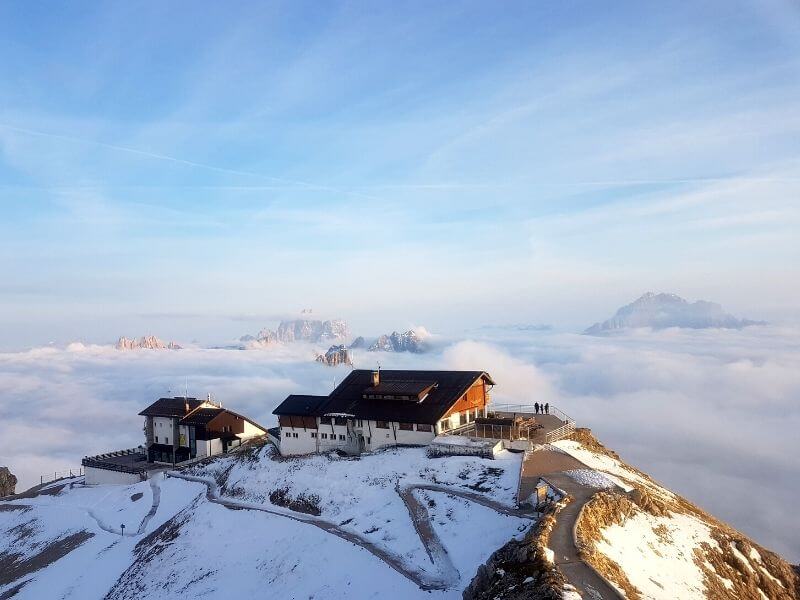
Must-See Places During Your Alps Road Trip
Visit the beautiful town of Chamonix
Located at the foot of Mont Blanc, Chamonix attracts visitors who come to experience not only the beauty of a typical alpine village, but also want to explore one of the most scenic alpine landscapes in the world.
Climbing, hiking, skiing or cycling. No matter which outdoor activity you have in mind, Chamonix probably is one of the best places in Europe to do it.
I compare prices for tours at Viator. This is one of the best platforms in Europe for tours. Another option is Get Your Guide. You can find almost the same tours at the same prices.
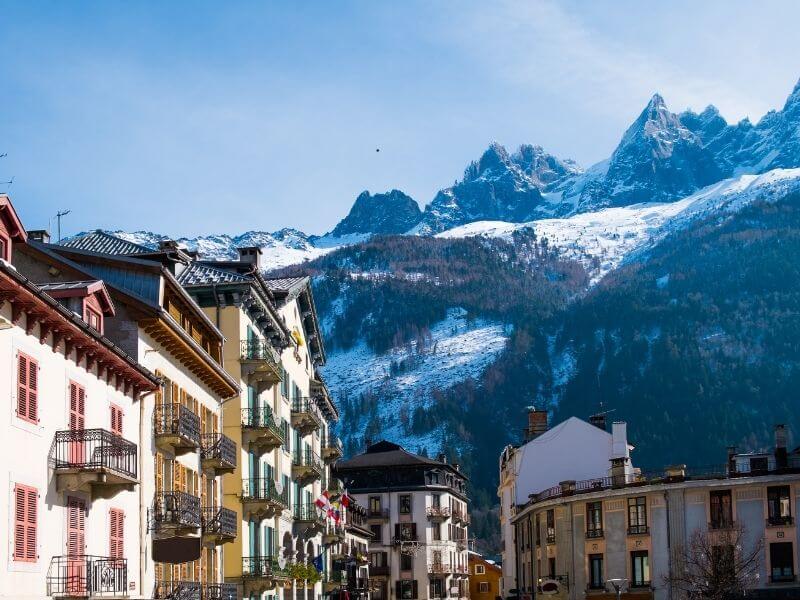
Observe the majestic natural beauty of Zermatt
Known for being one of the most expensive places to travel in Europe, the magnificence of Zermatt does not lie on its luxury chalets, cobblestone streets or horse-drawn carriages. It lies in its particular location.
Zermatt is right at the feet of Matterhorn, one of the most iconic mountain peaks in the world and a natural symbol of Switzerland. From Zermatt, dozens of hiking routes begin, where some of the most scenic spots in the Alps can be found.
Read more: How to plan a trip to Saxon Switzerland
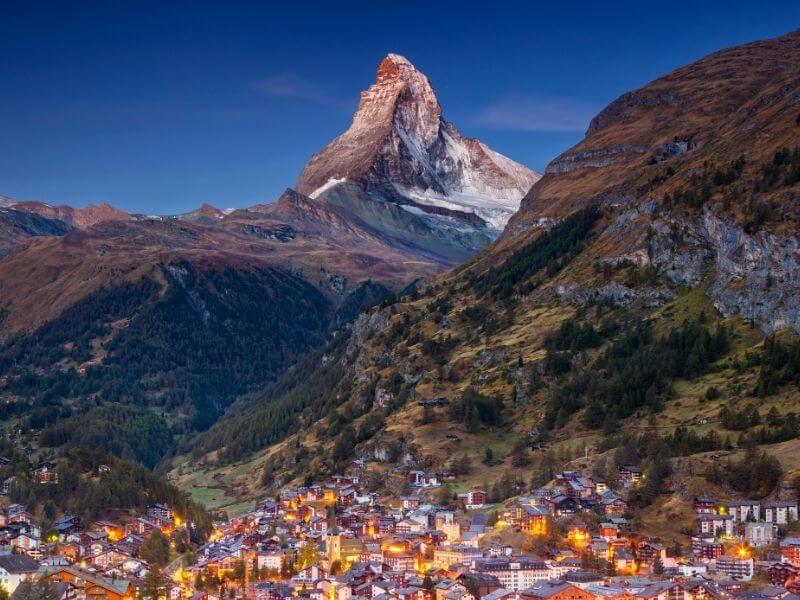
Explore German castles around Garmisch Partenkirchen
Offering almost every outdoor activity you can think of, Garmisch Partenkirchen is one of the best places to get a first glimpse of the beauty in the Alps.
Mostly known for its winter activities, Garmisch is also known for its proximity to the idyllic Schloss Neuschwanstein. With that said, this is the perfect hub if you are planning a road trip around the German Alps.
Read more: What is the most difficult hike in the Dolomites
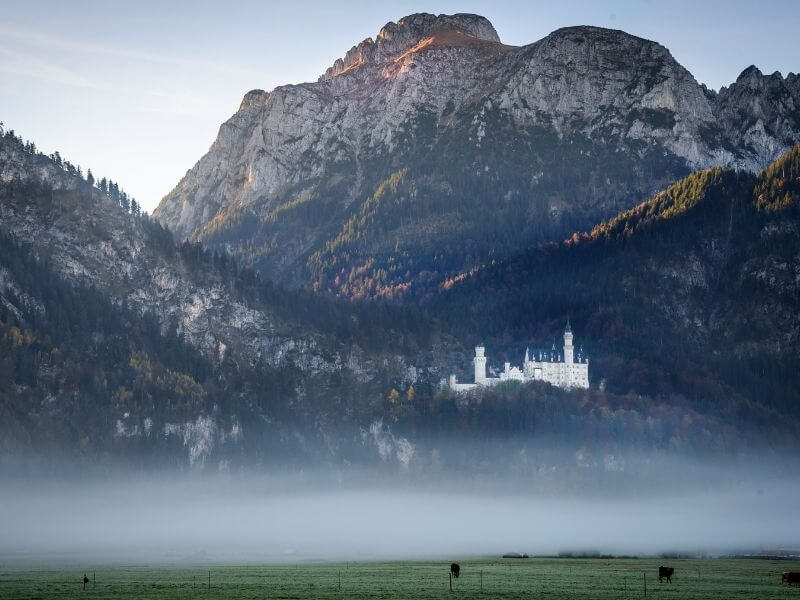
Call your spirit for adventure in Cortina
Right in the heart of the Dolomites (my favorite mountain region in Europe), Cortina lies in one of the most beautiful valleys in the world. It is surrounded by some of the most magnificent peaks in Europe and is the gateway to the most scenic hikes in whole Italy.
In comparison to most other places in this list, Cortina is not a place for one or two nights. From here, travelers can do multiple day hikes (such as the iconic Alta Via 1) or day trips to some of the most beautiful parts of the Dolomites.
Read more: Exploring the Alta Via 1 – Dolomites most beautiful hiking route
Read more: Which are the most beautiful mountain landscapes of Europe
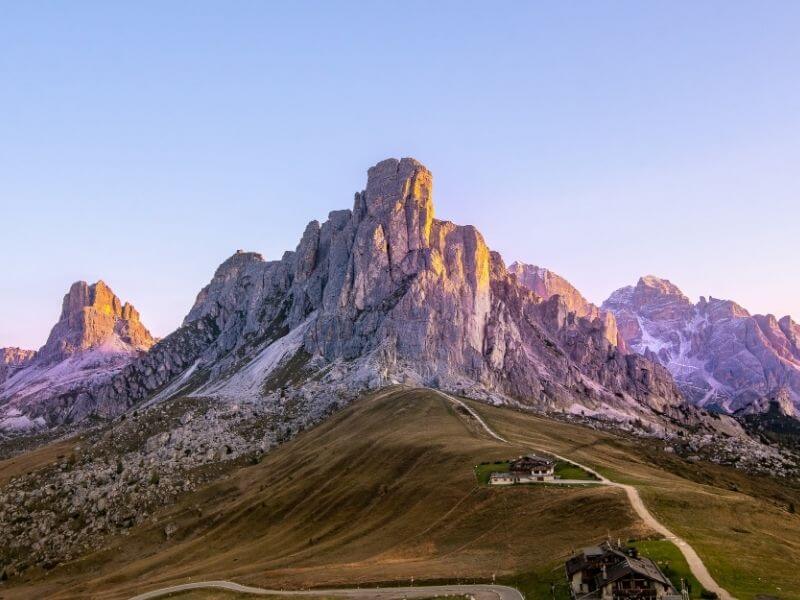
Marvel the cute and postcard like Hallstatt
Yes, Hallstatt is a little bit overrated, overcrowded and the worst example of what tourism might become. However, the beauty of this town is undeniable and doing a road trip across Austria without visiting Hallstatt for at least a couple of hours is a little bit like visiting Paris and not walking under the Eifel Tower.
But the uniqueness of Hallstatt does not rely only on the beauty of the village. It’s central location makes it perfect for a stop during a road trip in Austria – only a couple of hours away from the famous Grossglockner High Alpine Road, and 45 minutes from the ice caves of Dachstein and Eisriesenwelt.
Read more: Visiting the ice caves of Austria
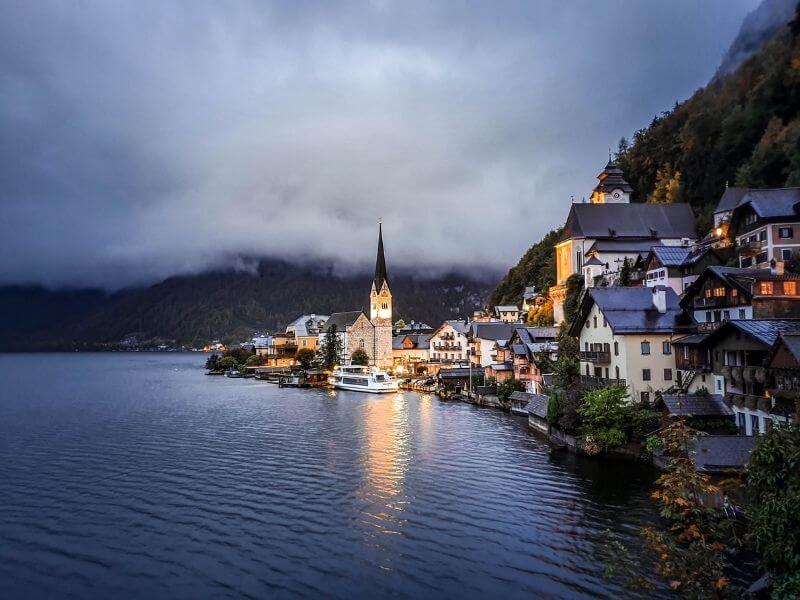
Frequently Asked Questions About Road Tripping in the Alps
1. What is the best time of year to do a road trip in the Alps?
The best time depends on your interests. Summer (June to September) is ideal for hiking, scenic drives, and outdoor activities. Winter (December to March) is perfect for skiing and snow-covered alpine landscapes, but requires more caution due to snow and road conditions.
2. How long should I plan for a road trip in the Alps?
Anywhere from 4 to 14 days is great depending on how many countries and regions you want to explore. A week is ideal for a focused itinerary, while two weeks allows for a broader, cross-border adventure through Austria, Italy, Switzerland, and more.
3. What are the most scenic driving routes in the Alps?
Some of the most beautiful alpine roads include:
- Grossglockner High Alpine Road (Austria)
- Col de la Bonette (France)
- Giau Pass and Falzarego Pass (Italy)
- Great St Bernard Pass (Switzerland-Italy)
- Nockalm Road (Austria)
4. Do I need a vignette or toll pass to drive through the Alps?
Yes. Countries like Austria, Switzerland, and Slovenia require a toll sticker (vignette), which can be purchased at border stations. France and Italy use toll booths instead. Germany and Liechtenstein currently do not charge tolls for private vehicles.
5. Is it possible to cross multiple countries in one trip?
Absolutely. The Alps stretch across eight countries, and cross-border travel is common in itineraries. Just be sure your rental car is allowed to cross borders and you’re aware of the road regulations in each country.
6. What kind of car should I rent for an Alps road trip?
A compact car is fine for summer, but if you’re traveling in winter or planning to drive alpine passes, consider a 4WD or SUV. Always check if winter tires or snow chains are included if traveling in colder months.
7. Can I camp or stay in mountain huts in the Alps?
Yes, but wild camping is illegal in most Alpine countries. However, designated camping areas, mountain huts (refuges), Gasthofs, and alpine resorts are available and range from budget to luxury.
8. How much does a road trip in the Alps cost?
A moderate 7-day trip typically costs between €900 and €1,300, including car rental, fuel, accommodation, food, tolls, and attractions. Costs increase in Switzerland and ski resort towns.
9. Is driving in the Alps difficult for beginners?
Not necessarily. Highways are well-maintained, but mountain roads can be narrow and winding. Use caution, especially in winter, and avoid driving after dark if unfamiliar with alpine routes.
10. What are the best cities to start an Alps road trip?
Top starting points with international airports and rental car access include:
- Bologna
- Zurich
- Munich
- Vienna
- Zagreb
- Milan
- Lyon

